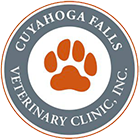Dr. Kendra is back with good thoughts about another species we’re seeing more at CFVC…
|
Guinea pigs are a small, gentle, lively species that make good pets because they are docile and relatively easy to care for. Today, we will discuss basic biology and husbandry that is relevant to care for these species as pets. Generally speaking, under conditions of good husbandry, guinea pigs are hardy animals with few disease problems. However, inadequacies in diet or husbandry can lead to illnesses that are difficult to reverse.
Guinea pigs are also known as “cavies” (not to be confused with Cavalier King Charles Spaniels). The typical lifespan of a pet guinea pig is 5 to 6 years. A female guinea pig is called a “sow” and a male guinea pig is called a “boar.” The three most common breeds of cavies we see in veterinary medicine include the American (or English), the Abyssinian, and the Peruvian.
Guinea pigs are social animals that seek physical contact with other guinea pigs when housed together. They often stand side by side when resting, but there is little mutual grooming. Hair pulling can be a form of aggression, and hair pulling and ear nibbling of subordinate animals is seen in crowded or stressful environments. Guinea pigs have a “freeze or flight” response to perceived danger. If frightened, they tend to become immobile, or make an explosive attempt to escape.
Guinea pigs have abundant androgen-dependent sebaceous glands along their back and around the anus that are used for marking. Guinea pigs are frequently seen rubbing or pressing their rumps against a surface. In older males, excessive accumulation of sebaceous secretions occurs in the skin around the base of the spine, resulting in which, matted, greasy fur.
Housing for cavies should be set up with the knowledge that healthy guinea pigs produce tremendous amounts of feces, often defecate in food and water containers, and turn over any unstable container. Solid cage flooring is preferable to wire mesh to prevent foot and leg injuries. Fiber bedding is excellent for use on solid floors, although newspaper, shredded paper, wood shavings, and straw may be used. Good ventilation is important. If a solid-sided cage is used, such as an open glass aquarium, change the bedding frequently to minimize ammonia levels in the cage. Guinea pigs do not jump or climb; therefore, the top of the cage does not have to be enclosed, but the walls should be at least 10 inches tall. Guinea pig cages should be placed in a quiet area and out of direct sunlight. Optimal temperature range for them is between 65 to 79 degrees Fahrenheit. Guinea pigs are better able to tolerate cooler rather than warmer environments and should not be exposed to high levels of temperatures and humidity.
Guinea pigs do not tolerate dietary or environmental changes well. Their food preferences are established early in life, and they often refuse to eat if their food is changed in type or presentation. Even a change in the brand of pelleted feed can result in refusal of food. It is a good idea to expose cavies, while they are still young, to small amounts of different guinea pig chows and vegetables so that they become accustomed to variety.
One of the most important needs of guinea pigs is that they require a dietary source of vitamin C. They need this because they lack an enzyme involved in the synthesis of vitamin C from glucose, therefore, their bodies cannot make it themselves like many other species. Commercially available guinea pig pellets are usually fortified with vitamin C; however, approximately half of the initial vitamin C may be oxidized and lost 90 days after the diet has been mixed and stored at room temperature. Foods that contain high levels of vitamin C are red and green peppers, broccoli, tomatoes, kiwi fruit, and oranges. Vitamin C can be added to the water, however added vitamin C loses more than 50% of its vitamin C content in 24 hours.
The recommended diet for pet guinea pigs consists of guinea pig pellets and grass hay, supplemented with fresh vegetables. Good quality grass hay should be available at all times. Fruits, rolled oats, and dry cereals should deb offered only in very small quantities, if at all, as treats.
Guinea pigs are coprophagic, and may ingest feces from the anus many times per day. Also, baby guinea pigs can be seen eating the dam’s droppings. Gross, right? However, coprophagy is an important function for them. If coprophagy is prevented, guinea pigs lose weight, digest less fiber, and excrete more minerals in the feces.
If you have any questions or concerns about your guinea pig, do not hesitate to contact us at (330) 929-3223.
Ferrets, Rabbits, and Rodents (Third Edition), James Wyman.Carpenter – Katherine E.Quesenberry – W.B. Saunders – 2012


